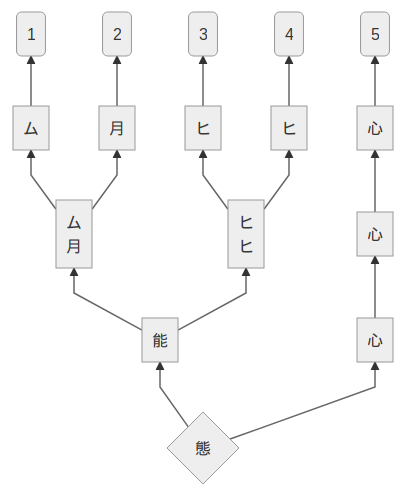Component order rules 1 and 2 combined
In this section we learn how the left-to-right and top-to-bottom rules work together.
The diagram below presents four kanji with different internal structures. Their structures are represented in the square diagrams above the kanji.

The diagram shows what happens when the left to right and top to bottom rules are combined.
Let’s focus on 語 kataru ‘to talk’; the implications for the remaining kanji are identical and well illustrated in the diagram.
語 kataru has two inner components:
- 言 iu ‘to say’;
- 吾 GO ‘I/myself’.
We can apply rule 1 (left to right) and write 言 iu first. Next we want to write 吾 GO, which can be further subdivided into two inner components:
- 五 GO ‘five’ and
- 口 SAI ‘sacred vessel’.
We therefore apply rule 2 (top-to-bottom) and write 五 GO first, then 口 SAI.
If you managed to wrap your head around this explanation, you have mastered the fundamentals of kanji component order. Now I would like to increase the structure complexity just a little with the following examples.

This time we will focus on 態 TAI, which is the combination of:
- ム mu,
- 月 tsuki,
- ヒ hi,
- ヒ hi,
- 心 kokoro.
Together, the first four shapes constitute one macro-component, which exists as an independent kanji: 能 NOU ‘ability’. The fifth shape is the other macro-component, which also exists as an independent kanji: 心 kokoro ‘heart’.
能 NOU can be split into a left sub-component and a right sub-component. Each sub-component can be further split into top and bottom components. We then apply the rule recursively, until we resolve the component order of this kanji.

Try this with the other two kanji in the previous diagram: 翻 hirugaesu and 器 utsuwa. It may look quite complex, but once you get the idea it becomes extremely intuitive.
What we just learned covers the structure (component order) of the preponderant majority of the over 2000 kanji that constitute the basic Japanese script.
